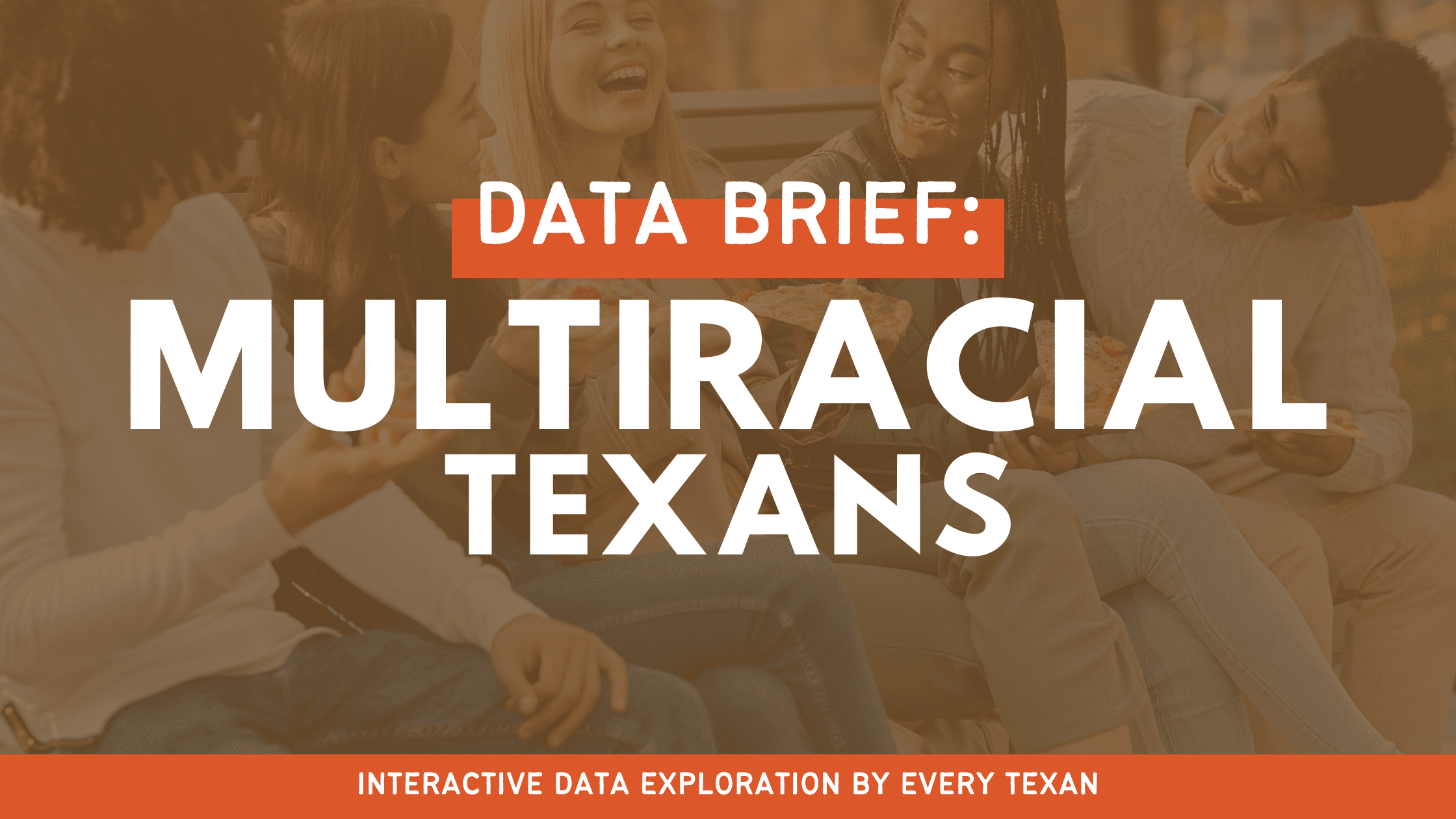About 5.7 million people in Texas identify as two or more races — 19.2% of the state’s population. This is a seemingly large increase from the roughly 488,000 Texans who were classified as multiracial in 2010 — just 2% of the population. However, studies find that changes in design, data processing, and coding of race and ethnicity questions in 2020 impacted this data. Regardless, the percentage of Texans identifying as multiracial grew from 7% in 2020 to 19% in 2023.
The Evolution of Race and Ethnicity Data in the U.S. Census
The U.S. Census Bureau has a long record of collecting race and ethnicity data, though these measures have not been accurate or equitable for most of history. In fact, before 1960, people did not get to choose their own race. Rather, census enumerators would determine the race of the people they counted based on appearance. The first census in 1790 only had three racial categories for people to choose from: Free white males / free white females, all other freed persons, and enslaved people. It was not until the year 2000 that people could select more than one race category on the census form.
More racial and ethnic categories have been added over time, though additional improvements are still necessary for more equitable data collection. For example, many individuals who identify as Hispanic/Latino or Middle Eastern or North African (MENA) do not feel accurately represented by standard race and ethnicity categories, according to research conducted by the Census Bureau.
Breaking Down Multiracial Identity in Texas
Multiracial Texans are diverse – 80.9% identify as white and some other race. This is largely due to how the Census Bureau classifies race and ethnicity, especially among Latino and Hispanic respondents. In 2023, 41% of Hispanic/Latino Texans identified as two or more races, of which the majority (95%) selected “Some other race” as one of the options. Recognizing this pattern, experts and advocacy groups have pushed for revisions to how race and ethnicity are measured.
Other multiracial groups in Texas include:
- 5% identify as Black and white.
- 3.5% identify as American Indian/Alaska Native and white.
- 3.3% identify as Asian and white.
- 1.3% identify as Black and some other race.
- 0.6% identify as Black and American Indian/Alaska Native.
Addressing Disparities: The Need for Better Data on Multiracial Texans
Collecting data on multiracial individuals is essential for understanding their experiences and addressing their unique challenges. For example, studies show that multiracial people tend to experience worse mental health outcomes compared to their monoracial peers. According to the 2024 Texas Kids Count Data Book, 27% of multiracial high schoolers reported attempting suicide in 2023 – the highest rate of any racial or ethnic group – compared to 12% of white high schoolers in Texas. Nationally, 11% of multiracial adults report being dissatisfied with life, and 41% experience social isolation or loneliness — both rates exceeding those of other racial groups.
Multiracial Texans are more likely to experience poverty than white Texans and have one of the highest uninsured rates in the state at 24%. Recognizing and addressing these disparities is essential to ensure that all Texans, regardless of racial identity, have the opportunity to thrive.
Advancing Equity Through Better Data Collection
Collecting race and ethnicity data is essential to understand and address the distinct challenges faced by communities. Reliable data highlights disparities in various areas, allowing policymakers to make well-informed,inclusive decisions. To improve these efforts, the Census Bureau is refining its data collection methods on race by updating standards and revising the race/ethnicity question.
At Every Texan, we believe social justice requires robust public policy. Our mission is to strengthen public policy that expands opportunity and equity for all Texans. By gathering precise and thorough data, we can support research, craft well-founded policy recommendations, and provide valuable insights to policymakers and stakeholders.

